Twelve Months On: How a Business Catalyst (Large) Grant is Shaping Ellis Mhairi Cameron’s Practice
In 2024, Scottish jeweller Ellis Mhairi Cameron set out on a bold new chapter for her business, fuelled by a Business Catalyst (Large) Grant from the Goldsmiths’ Centre – an opportunity made possible through the generosity of modern philanthropic giving via the Goldsmiths’ Foundation from members of the Goldsmiths’ Company. Just six months in, it was clear this grant was more than financial support; it was a creative catalyst, freeing Ellis from the everyday demands of her business and opening new doors to experiment with hand and pneumatic engraving alongside the award-winning Sam James Engraving team, also based at the Goldsmiths’ Centre.
Now, a full year into the project, Ellis’s journey has deepened. What began as an opportunity to learn a new technical skill has evolved into a far broader exploration of creative identity, influencing not only the surface of her jewellery but the very way she approaches making, business, and creative growth. In this follow-up article, Ellis shares how her engraving practice has progressed, what challenges she has encountered along the way, and how the Business Catalyst (Large) Grant is helping to shape the future direction of her work.
An Evolution in Both Practice and Perspective
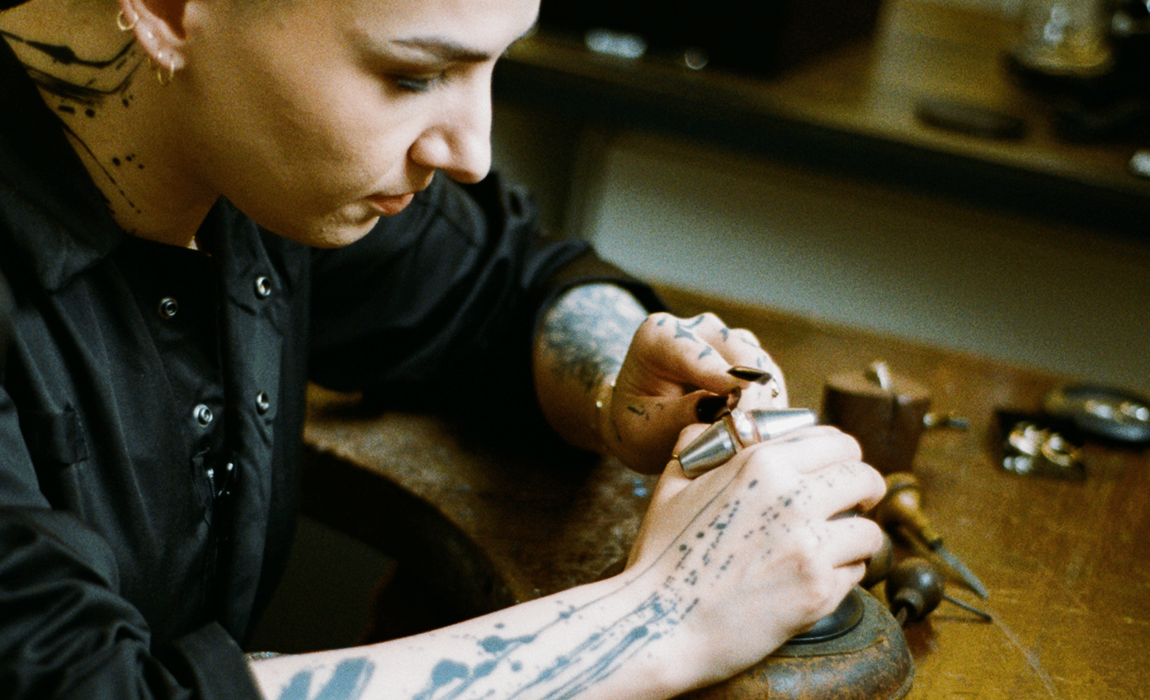
The grant has had a huge impact - not just on my jewellery designs, but on how I approach my business as a whole.
It gave me a rare opportunity to take a step back and really focus on developing my skills. I was able to dive deep into learning both hand and pneumatic engraving with the Sam James Engraving team, which has opened up a whole new visual language within my jewellery. The process has allowed me to explore form and texture in a way that feels really exciting and aligned with the direction I want my work to grow in. Making larger-scale, experimental pieces has been really exciting. Personally, it’s also reminded me why I started doing this - to create bold, meaningful pieces rooted in history and technique. It’s also helped me grow more confident in my decision-making as a business owner - knowing I can invest in my development while still building something sustainable.
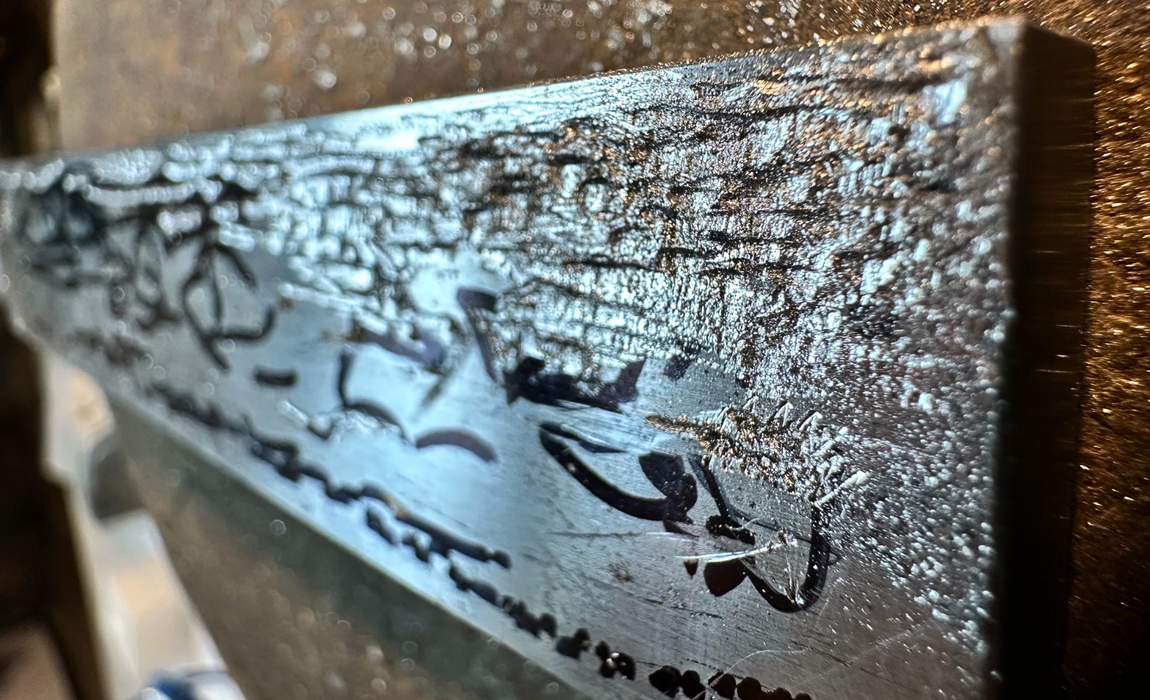
So one of the most exciting things I’ve made recently is actually an engraved sgian dubh - a traditional Scottish blade - but reimagined in my own style. I engraved the handle by hand with these deep, layered markings that feel really earthy - kind of like eroded rock or ancient ruins - which ties back to the textures I use in my jewellery, but taken up a notch in terms of scale and impact. Additional details were then added in using pneumatic engraving, incorporating all the techniques I'd learned through the grant. That piece really cemented the direction I want to take some of my work in: work that’s larger, textural in a new way, and very grounded in place, material, and story.
It’s interesting as it's ended up not just being about technically learning engraving - it’s been about giving myself space to experiment without commercial pressure. I’ve reconnected with why I started making in the first place. Long-term, I see engraving becoming a proper part of my design language - not just a surface detail, but something that shapes whole pieces. I’m also thinking bigger now: more sculptural, more conceptual, maybe even pieces that sit between jewellery and objects. It’s made me realise that growth doesn’t always have to mean scaling up the business - sometimes it’s about going deeper into your own practice, and following what feels exciting.
A Humbling but Satisfying Process
Engraving is physical and repetitive; I’m used to carving in wax, which is quite fluid, but engraving is all about control and rhythm. You’ve got to learn how the metal behaves, how to move with it instead of against it. I’ve made mistakes - digging in too deep, slipping, getting the pressure wrong - but that’s how you learn, and actually some of the marks I ''messed up'' ended up inspiring new textures. It’s been a humbling process, but also really satisfying.
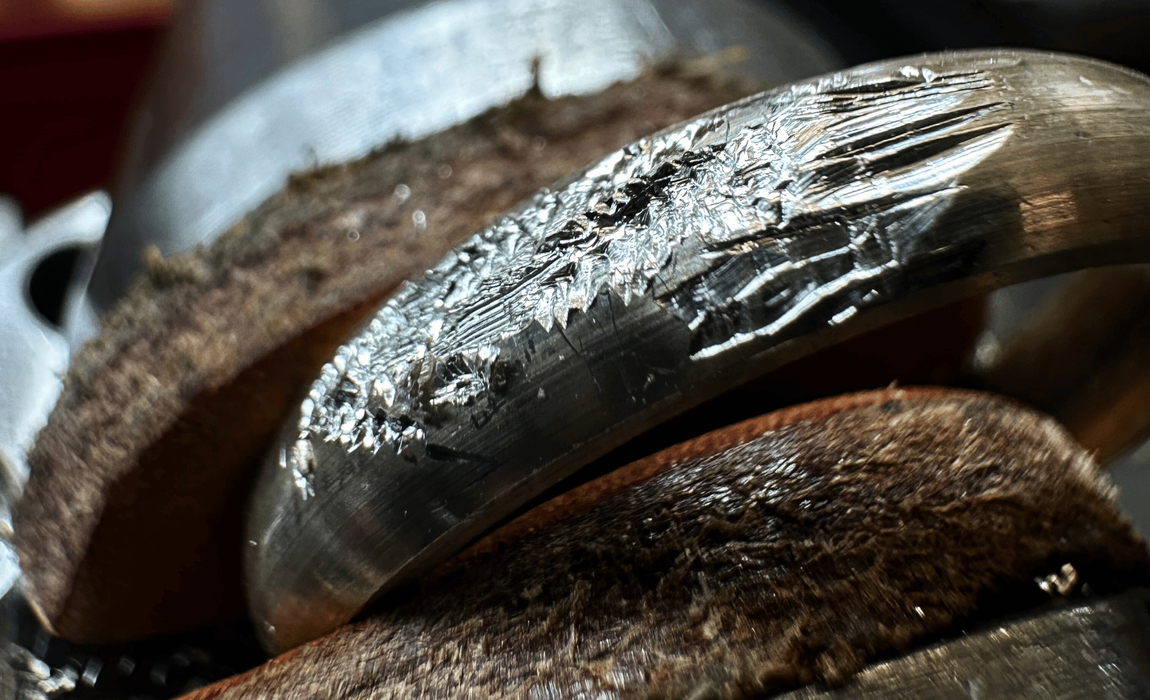
The Importance of Carving Out Time to Grow: “Don’t wait for a Quiet Moment - it Won’t Come!”
One of the biggest challenges has been time - specifically, making space for experimentation while still keeping everything else running. When you run a business, it’s so easy to get caught up in the day-to-day: emails, orders, production, customer care, admin…. At first, I worried about the balance of it all; but I realised pretty quickly that if I didn’t protect the creative time, the whole point of the grant would be lost. So I started blocking out regular specific times in the week - full afternoons where I wouldn’t book meetings or check emails - just to sit and focus on developing the new techniques. That structure really helped me find balance and make actual progress. It’s a balance for sure; honestly I’m still figuring it out, especially as my brand grows. What’s helped me is mapping out time for 'playing' but treating it as seriously as I would a deadline.
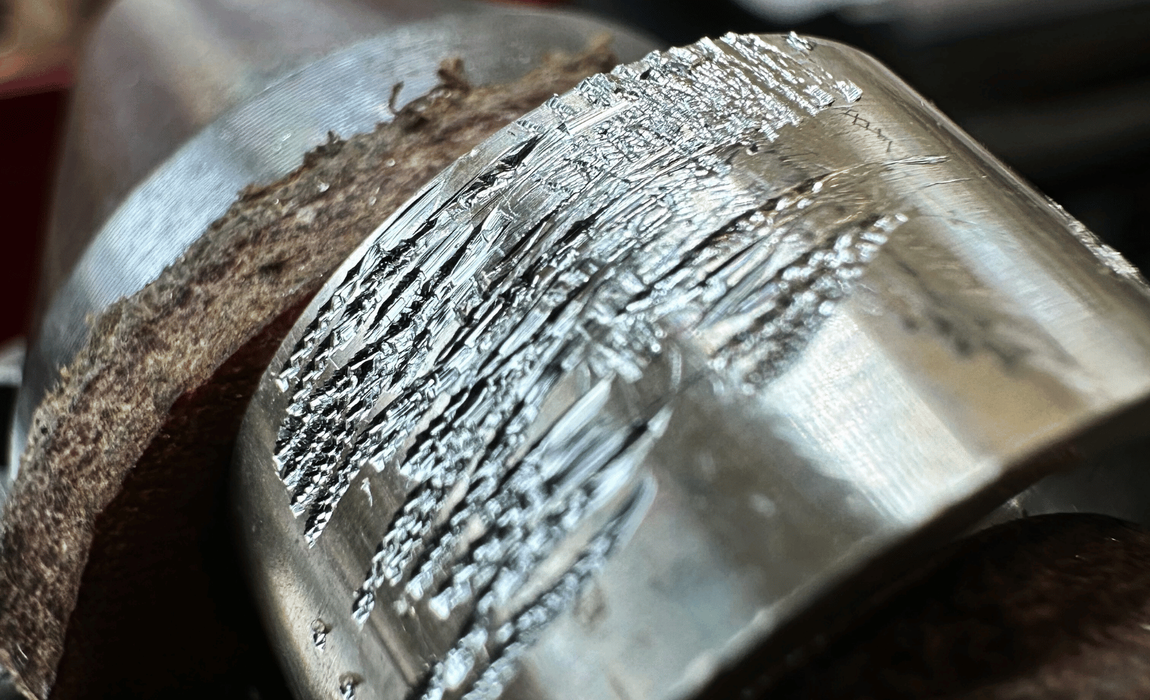
It’s way too easy to spend all your time chasing emails, packing orders, sorting production - but if you don’t protect space to experiment, it’s hard to grow.
Now I set aside proper studio time just to make, with no expectations. It’s not about finishing a piece or selling it - it’s just about trying new things. Even if it’s a couple of hours every week or two. The advice from me would be to give yourself permission to mess about. Don’t wait for a quiet moment - it won’t come! So make the time and space you need to develop and experiment.
Paying It Forward: The Value of Mentorship
I really am looking forward to passing on what I’ve learned. I’ve had some incredible mentors throughout my career so far, and I know how valuable that guidance can be - especially in the early stages of a career. I think it’s important to talk openly about the realities of running a creative business - the highs, the lows, and the practical stuff people often don’t see. Mentorship is such a powerful way to build community and pass on knowledge, and I feel very lucky to be in a position where I can now offer that kind of support to someone else.
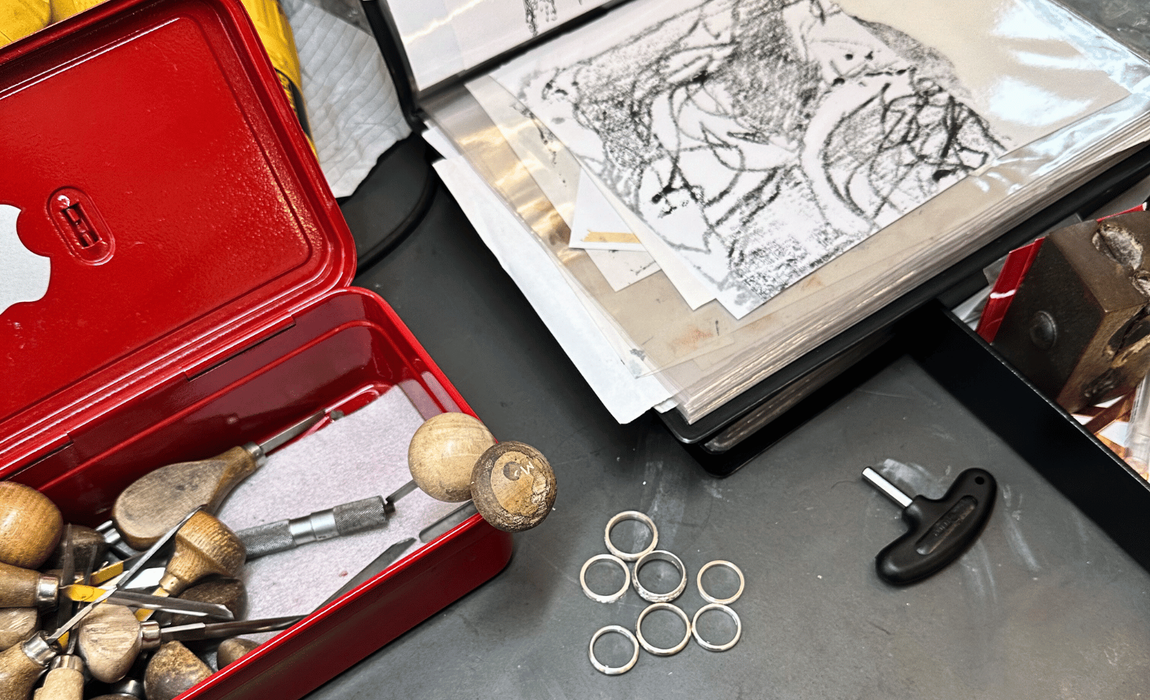
Advice for Future Applicants
My biggest piece of advice would be: be clear and specific about what you want to achieve, and show why it matters - not just creatively, but in terms of your business growth too. When I applied, I focused on how developing new engraving techniques would not only evolve the aesthetic of my work but also increase production flexibility and offer more design options to clients. That kind of balance - between creative development and commercial value - is key. I also made sure to outline the steps I’d take and how the grant would enable things I couldn’t do otherwise. I think showing that you have a well-thought-out plan, along with a clear understanding of how the grant fits into your longer-term vision, really helps your application stand out. Being super passionate about why it's so important is key - why you, why now.
The Power of Grants to Fuel Creative Growth
Grants like this are such a rare opportunity to invest in yourself and your design practice. They give you that breathing room to explore, experiment, and refine your skills without the usual pressure to turn everything into a viable, sellable product straight away. That kind of space is incredibly valuable in a creative business, where time and headspace are often your most limited resources. I’d absolutely apply for similar opportunities in the future, especially if it allowed me to keep pushing the boundaries of my work and connecting with other makers, collaborators, or mentors. It’s not just about funding - it’s about growth, both creatively and professionally.